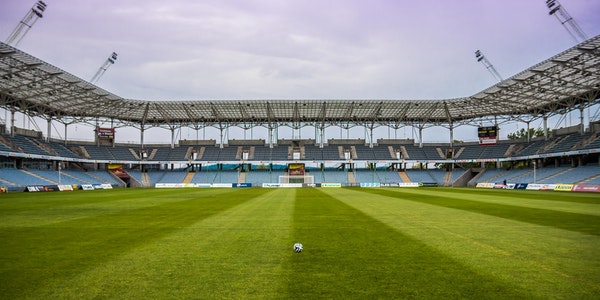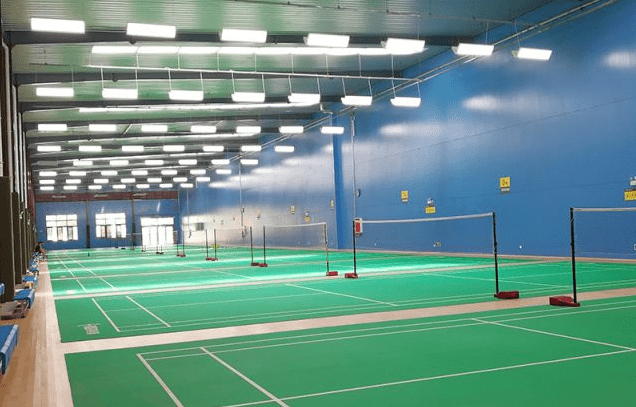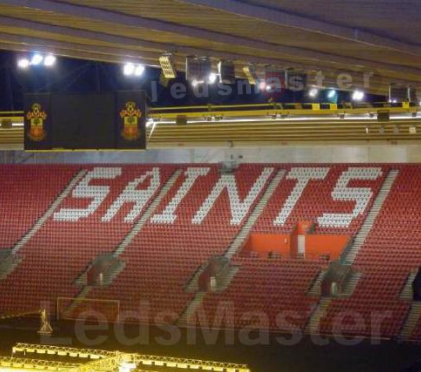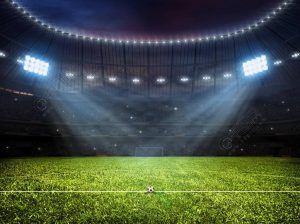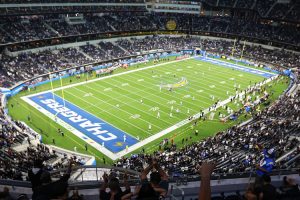Distribute user manuals, documentation, and resources to support ongoing maintenance and operation of the lighting system.
Educate stakeholders, including players, coaches, and spectators, on the benefits of LED lighting and any changes to lighting-related protocols or procedures.
- Monitoring and Maintenance:
Implement a proactive monitoring and maintenance program to ensure the long-term performance and reliability of the LED lighting system.
Regularly inspect and clean fixtures, replace faulty components, and address any issues or malfunctions promptly to prevent downtime and ensure optimal operation.
Monitor energy consumption, lighting usage patterns, and performance metrics to identify opportunities for further optimization and efficiency improvements over time.
By following a structured implementation process, Real Madrid can successfully transition to LED lighting technology at the Santiago Bernabéu Stadium and realize the associated benefits of improved energy efficiency, cost savings, environmental sustainability, and enhanced lighting quality.
4. Results and benefits achieved
Results and Benefits Achieved from Transitioning to LED Lighting at Real Madrid:
- Energy Savings: Transitioning to LED lighting at the Santiago Bernabéu Stadium has resulted in significant energy savings for Real Madrid. LED fixtures consume less electricity to produce the same amount of light compared to traditional lighting technologies, leading to lower energy bills and reduced overall energy consumption.
- Cost Reduction: The adoption of LED lighting has led to cost reductions for the club, both in terms of energy expenses and maintenance costs. With lower energy consumption and longer lifespans, LED fixtures require fewer replacements and repairs, resulting in reduced operational expenses and greater financial savings over time.
- Environmental Sustainability: LED lighting contributes to environmental sustainability by reducing greenhouse gas emissions and minimizing the carbon footprint of Santiago Bernabéu Stadium. Real Madrid’s commitment to environmental responsibility aligns with broader efforts to mitigate climate change and promote sustainable practices in the sports industry.
- Improved Lighting Quality: LED lighting enhances the quality of illumination at the Santiago Bernabéu Stadium, providing brighter, more uniform lighting with better color rendering and reduced glare. This improves visibility for players and spectators, enhancing the overall matchday experience and ensuring optimal viewing conditions for fans.
- Enhanced Flexibility and Control: LED lighting systems offer greater flexibility and controllability compared to traditional lighting technologies, allowing for dynamic lighting effects, color changes, and dimming capabilities. This flexibility enables Real Madrid to create immersive lighting experiences, enhance branding opportunities, and adapt lighting settings to different events and occasions at the stadium.
- Longevity and Durability: LED fixtures have longer lifespans and greater durability than traditional lighting sources, reducing the need for frequent replacements and maintenance tasks at the Santiago Bernabéu Stadium. The robust construction of LED fixtures ensures reliable performance and reduced downtime for stadium operations, enhancing operational efficiency and continuity.
Overall, transitioning to LED lighting at the Santiago Bernabéu Stadium has delivered tangible benefits for Real Madrid, including energy savings, cost reduction, environmental sustainability, improved lighting quality, enhanced flexibility, and greater longevity. By embracing LED technology, the club demonstrates its commitment to innovation, efficiency, and environmental stewardship while enhancing the matchday experience for fans and stakeholders.
C. Additional case studies as necessary
Here are a couple of additional case studies highlighting the transition to LED lighting in sports facilities:
Case Study 3: Allianz Arena (FC Bayern Munich)
Overview of the Team and Their Stadium: FC Bayern Munich, one of the most successful football clubs in Germany, plays its home matches at the Allianz Arena. Located in Munich, Germany, the stadium has a seating capacity of over 75,000 spectators and is known for its distinctive exterior featuring color-changing LED panels.
Reasons for Transitioning to LED Lighting:
- Energy Efficiency: FC Bayern Munich transitioned to LED lighting at the Allianz Arena to improve energy efficiency and reduce electricity consumption during matches and events.
- Enhanced Fan Experience: LED lighting allows for dynamic color changes and lighting effects, enhancing the fan experience during matches and creating a vibrant atmosphere in the stadium.
- Environmental Sustainability: The switch to LED lighting aligns with FC Bayern Munich’s commitment to environmental sustainability and reducing the carbon footprint of the Allianz Arena.
- Operational Efficiency: LED lighting systems require less maintenance and offer greater longevity compared to traditional lighting technologies, reducing maintenance costs and improving operational efficiency at the stadium.
Results and Benefits Achieved:
- Energy Savings: Transitioning to LED lighting has led to significant energy savings for FC Bayern Munich, resulting in lower electricity bills and reduced overall energy consumption at the Allianz Arena.
- Improved Fan Experience: LED lighting has enhanced the fan experience at the stadium, creating dynamic lighting effects and color changes that contribute to a lively and engaging atmosphere during matches and events.
- Environmental Impact: The switch to LED lighting has reduced the carbon footprint of the Allianz Arena, aligning with FC Bayern Munich’s sustainability goals and environmental stewardship initiatives.
- Operational Efficiency: LED lighting systems require less maintenance and offer greater reliability, reducing downtime and maintenance costs for stadium operations.
Case Study 4: Mercedes-Benz Stadium (Atlanta Falcons & Atlanta United FC)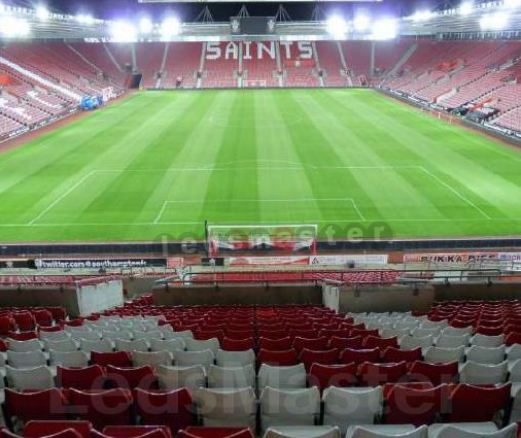
Overview of the Teams and Their Stadium: Mercedes-Benz Stadium is home to the Atlanta Falcons of the NFL and Atlanta United FC of Major League Soccer (MLS). Located in Atlanta, Georgia, USA, the stadium features a retractable roof and seating capacity of over 71,000 for football matches and 42,500 for soccer matches.
Reasons for Transitioning to LED Lighting:
- Energy Efficiency: Mercedes-Benz Stadium transitioned to LED lighting to improve energy efficiency and reduce electricity consumption during events, including football and soccer matches, concerts, and other entertainment events.
- Enhanced Fan Experience: LED lighting allows for customizable lighting effects and dynamic color changes, enhancing the fan experience and creating an immersive atmosphere during events at the stadium.
- Cost Savings: LED lighting systems offer long-term cost savings through reduced energy consumption, lower maintenance costs, and greater longevity compared to traditional lighting technologies.
- Sustainability: The switch to LED lighting aligns with Mercedes-Benz Stadium’s commitment to sustainability and environmental responsibility, contributing to reduced energy usage and carbon emissions.
Results and Benefits Achieved:
- Energy Savings: Transitioning to LED lighting has led to significant energy savings for Mercedes-Benz Stadium, resulting in lower electricity bills and reduced overall energy consumption during events.
- Enhanced Fan Experience: LED lighting has enhanced the fan experience at the stadium, creating dynamic lighting effects and immersive atmospheres during football matches, soccer games, concerts, and other events.
- Cost Reduction: LED lighting systems offer long-term cost savings through reduced energy consumption and maintenance costs, contributing to greater operational efficiency and financial savings for stadium operations.
- Sustainability Impact: The switch to LED lighting has reduced the environmental impact of Mercedes-Benz Stadium, aligning with the venue’s sustainability goals and environmental stewardship initiatives.
These additional case studies demonstrate the widespread adoption of LED lighting in sports facilities worldwide and highlight the various benefits achieved by transitioning to this energy-efficient and versatile lighting technology.
V. Challenges and Considerations
A. Initial investment costs
The initial investment costs for transitioning to LED lighting in sports facilities can vary depending on factors such as the size of the facility, the scope of the project, and the specific lighting requirements. Here are some key cost considerations associated with the transition to LED lighting:
- LED Fixtures: The cost of LED lighting fixtures can vary based on factors such as the type of fixture, light output, quality, and brand. High-quality LED fixtures designed for sports facilities may have higher upfront costs but offer better performance, durability, and energy efficiency over time.
- Installation Labor: The cost of labor for installing LED lighting fixtures includes expenses related to electrical work, wiring, mounting, and assembly. Professional installation by licensed electricians or contractors ensures proper setup and compliance with safety standards and regulations.
- Lighting Design and Engineering: Engaging lighting designers, engineers, or consultants to design an optimized LED lighting solution tailored to the specific needs and requirements of the sports facility may incur additional design fees or consulting costs.
- Control Systems and Accessories: Additional components such as lighting controls, sensors, dimmers, and accessories may be required to optimize energy efficiency, enhance lighting quality, and provide flexibility and customization options. The cost of these components should be factored into the overall project budget.
- Infrastructure Upgrades: In some cases, infrastructure upgrades may be necessary to support the installation of LED lighting systems, such as electrical upgrades, wiring modifications, or structural enhancements. These additional costs should be considered when planning the transition to LED lighting.
- Retrofitting vs. New Installation: Retrofitting existing lighting fixtures with LED technology may offer cost savings compared to completely replacing fixtures with new LED fixtures. However, retrofitting may require additional labor and materials for compatibility and installation, depending on the condition and type of existing fixtures.
- Warranty and Support: Investing in LED lighting fixtures with comprehensive warranties and support services provides added assurance and protection against defects, malfunctions, or performance issues, reducing the risk of unexpected expenses or downtime.
Overall, while the initial investment costs for transitioning to LED lighting in sports facilities may be higher compared to traditional lighting technologies, the long-term benefits, including energy savings, cost reductions, and environmental sustainability, often outweigh the upfront expenses. Conducting a thorough cost analysis and evaluating the potential return on investment can help stakeholders make informed decisions and maximize the value of transitioning to LED lighting.
B. Technical considerations and compatibility issues
When transitioning to LED lighting in sports facilities, several technical considerations and compatibility issues need to be addressed to ensure a successful implementation. Here are some key factors to consider:
- Electrical Infrastructure: Assess the existing electrical infrastructure of the sports facility to ensure compatibility with LED lighting systems. Verify that the electrical wiring, circuits, and power distribution panels can support the electrical load requirements of LED fixtures and any additional components such as lighting controls or dimming systems.
- Voltage Compatibility: LED lighting fixtures are available in different voltage options (e.g., 120V, 240V, 277V), so it’s essential to verify compatibility with the voltage supply available at the sports facility. Ensure that LED fixtures are matched with the appropriate voltage requirements to prevent electrical issues or damage to the fixtures.
- Lighting Design and Layout: Work with lighting designers or engineers to develop a comprehensive lighting design and layout plan tailored to the specific needs and requirements of the sports facility. Consider factors such as lighting levels, uniformity, glare control, color temperature, and distribution to optimize visibility, safety, and performance for players and spectators.
- Fixture Mounting and Placement: Determine the mounting locations and placement of LED fixtures within the sports facility to achieve optimal lighting coverage and uniformity. Consider factors such as mounting height, fixture spacing, beam angles, and aiming angles to minimize shadows, glare, and hotspots while maximizing light distribution and coverage.
- Lighting Controls and Dimming: Evaluate the compatibility of LED fixtures with lighting controls and dimming systems to provide flexibility, customization, and energy savings. Choose LED fixtures that are compatible with dimmable drivers or controllers and integrate seamlessly with existing or planned lighting control systems for centralized control and automation.
- Environmental Conditions: Consider the environmental conditions and operating environment of the sports facility, such as temperature extremes, humidity levels, dust, and moisture exposure. Select LED fixtures that are designed to withstand harsh conditions and have appropriate ingress protection (IP) ratings for indoor or outdoor use to ensure reliability and durability over time.
(To Be Continued)

